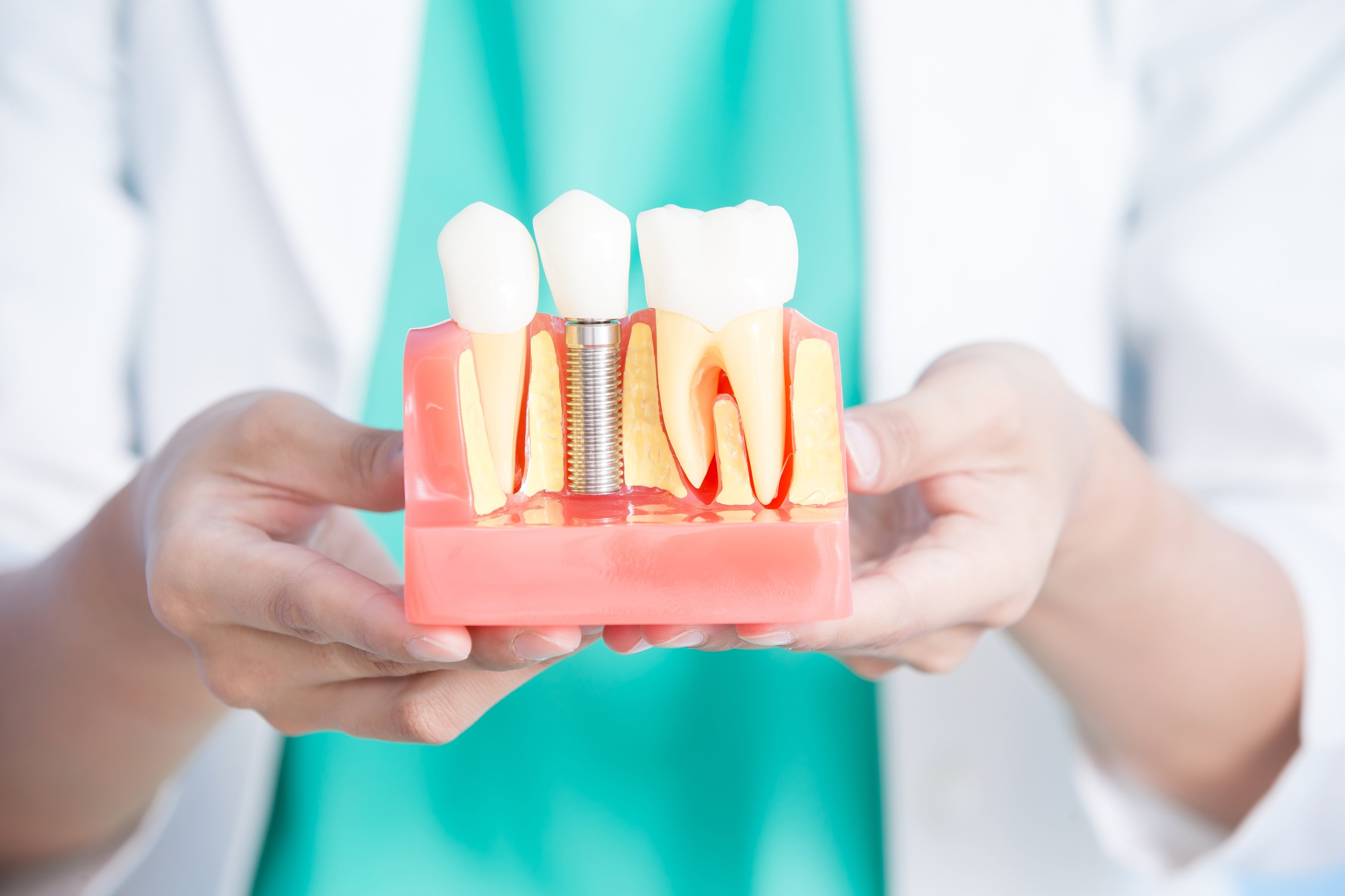By Kate Ranta on Apr 18, 2013 @ 11:06 AM
A dental implant procedure is when an oral surgeon or periodontist surgically places an artificial tooth that's permanently fused in the jawbone. Decades ago, if you lost a tooth, your choices were a fixed bridge or removable dentures. Fixed bridges rely on neighboring healthy teeth as anchors, which can have a negative impact on them down the road. And, removable dentures can slip or make embarrassing clicking sounds when you speak.
A dental implant made of titanium metal fuses to the jawbone, serving as the root of the missing tooth. Unlike fixed bridges, which may need to be replaced two and three times during a lifetime, implants are durable and rarely, if ever, need to be replaced.
Advantages of Dental Implants
They look good!
Implants are aesthetically superior to bridges and dentures because they stay put and look like real teeth. You might even forget you ever lost a tooth!
They save adjacent teeth.
Because implants don't need to be anchored to the teeth next to them, they preserve the overall integrity of your healthy teeth. No more decay of otherwise sound teeth.
They build confidence.
Remember when Aunt Mable's dentures clicked when she spoke? Or when Grandpa Eddie pulled his out to show his gummy smile? You laughed, right? But there's something embarrassing about the noise and slippage of dentures. With implants, you know they will remain firmly in place for decades.
They are reliable
You don't have to worry about misplacing implants, unlike dentures. And, you won't have to replace them many times, unlike bridges.
It's a Process
A dental implant procedure is not a quick one. What happens when you get a dental implant?
Complete dental exam. This may include X-rays and molds made of your mouth.
Treatment plan. You will work closely with your dental team to create a treatment plan. Before the procedure, your providers will take into consideration the number of teeth that need to be replaced and the condition of your jawbone. After the procedure, you will be instructed on how implant teeth should be cared for, which is essentially the same way as your regular teeth: brushing and flossing to avoid plaque and decay is a must!
Procedure. It's important to note that placing dental implants involves several surgical procedures, which all together can take three to nine months or more. It's a lengthy journey, but much of the time is for healing and allowing new bone to grow in your jaw. The steps are:
1. The dental implant cylinder is placed in your jawbone.
2. You will have a healing period of several months.
3. Once healed, an abutment is placed, followed by an implant prosthesis or crown.
Pain control. You will be given a form of anesthesia during the procedure. This can include local or general anesthesia, or sedation. Your provider will discuss which option is best for you. You should be sure that you have someone to take you home after the procedure.
Do you think you might need a dental implant? It's critical that you have a dental plan. You might be wondering "does dental insurance cover implants"? Look for a dental plan that offers coverage or discounts for implant procedures, including abutments, prosthesis removal, and crowns.





comments